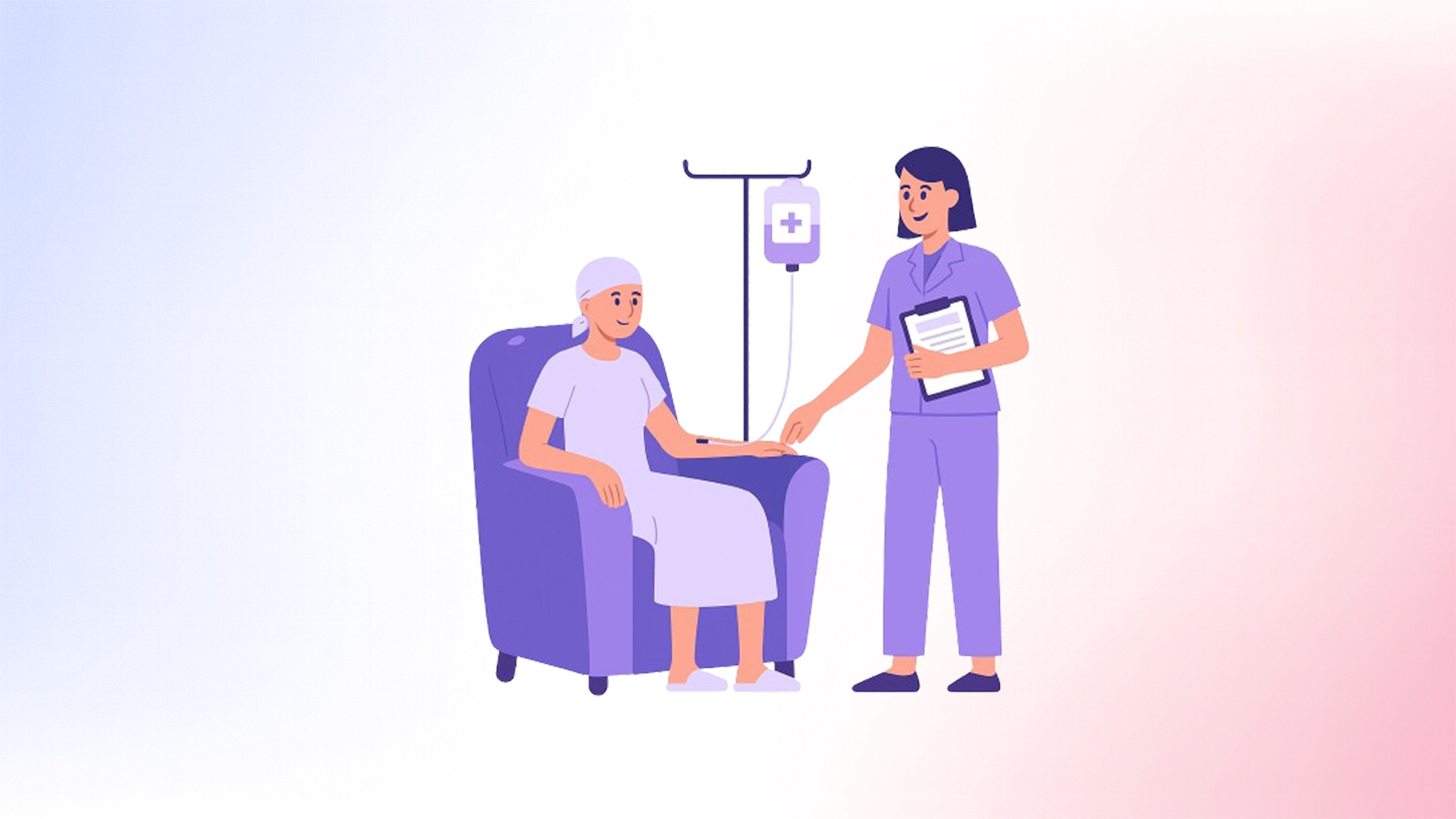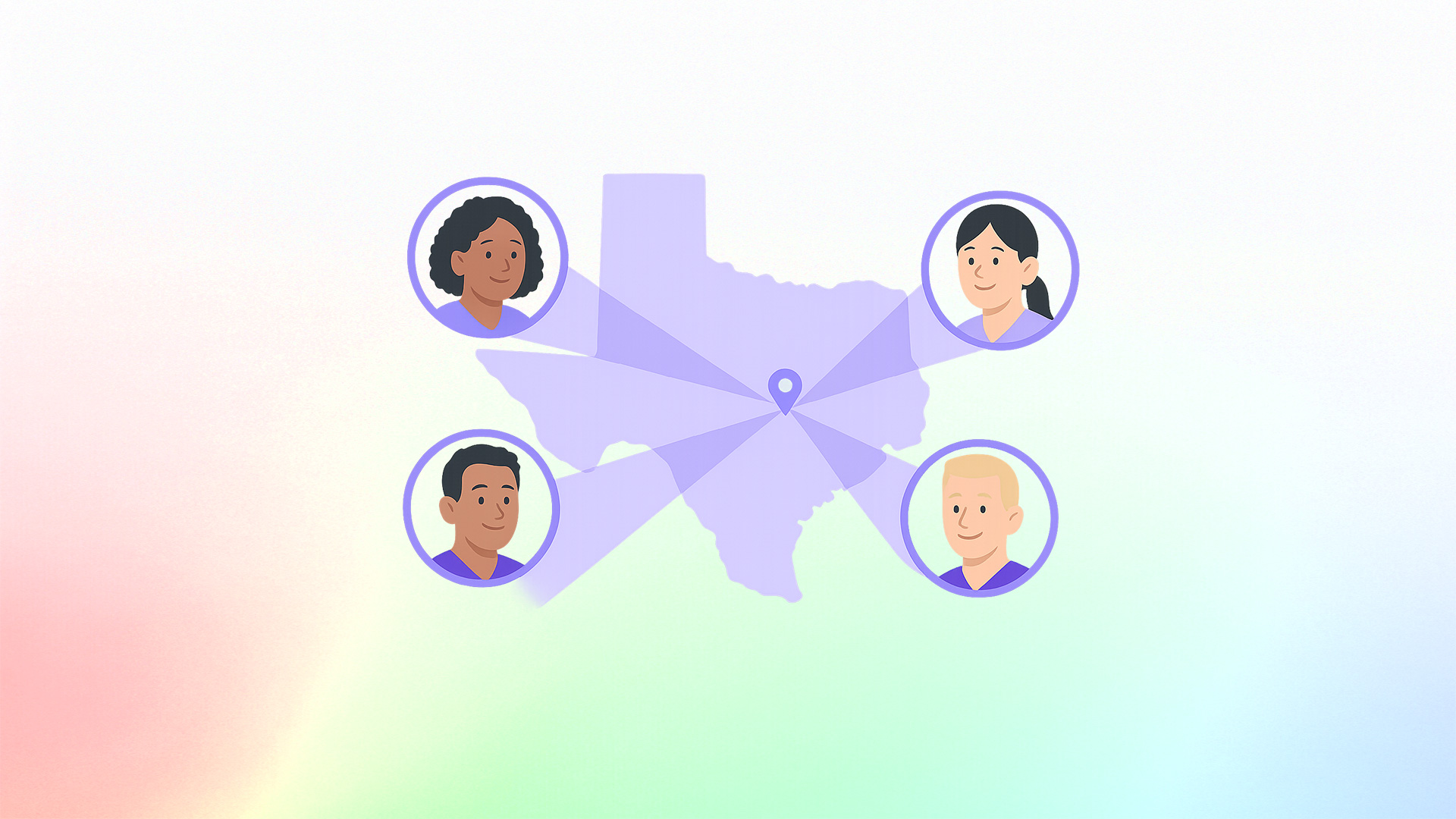Finding an Acute Care Nurse Practitioner (ACNP) preceptor requires connecting with experienced clinicians who supervise NP students in hospital and critical care settings. These clinical preceptors guide students through acute conditions, emergency medicine, and critical care practice, helping them complete required clinical hours for board certification, state licensure, and successful entry into advanced nursing practice.
TL;DR: Acute Care NP Preceptors — How to Find One When Everyone Says No
- The demand for acute care nurse practitioners keeps rising, but the number of available clinical preceptors has not kept pace.
- NP students face increasing competition for clinical placements in hospitals, intensive care units, and emergency departments.
- Time restraints, productivity pressures, and lack of employer support discourage many experienced preceptors from taking students.
- Students who start early, stay flexible with clinical sites, and use preceptor-matching support secure clinical rotations faster.
- Create your free NPHub account to connect with verified Acute Care NP preceptors and complete your supervised clinical experience on time.
When Every Door Feels Closed: Starting the Search for an ACNP Preceptor
You already know what everyone keeps saying, that there’s a shortage of preceptors, hospitals are full, and the process just takes time. But when your next clinical rotation depends on it, those answers stop feeling reasonable.
You’ve done the outreach, followed every lead, and still don’t have the acute care nurse practitioner preceptor your program requires.
For most NP students, this is the part no one really prepares you for. The mix of pressure and silence. The feeling that every clinical site has already said no before you even ask. It’s not a lack of effort; it’s a system struggling to meet the number of advanced practice registered nurses trying to complete their clinical hours.
Acute care nurse practitioners are essential in today’s hospitals. They assess critically ill patients, perform complex physical examinations, prescribe medications, and collaborate with other healthcare professionals in fast-paced environments like intensive care units and emergency departments.
Finding the right preceptor isn’t just about finishing your program — it’s about building the foundation for confident, capable patient care.
If that’s where you are, it might be time to approach things differently. Create your free NPHub account and connect with verified Acute Care NP preceptors who match your goals and location. NPHub helps manage outreach, school paperwork, and preceptor coordination so you can spend less time waiting and more time preparing for clinical practice.
This guide breaks down why finding a preceptor in acute care has become so difficult and what strategies actually help NP students move forward.
The Reality Behind the ACNP Boom
The demand for acute care nurse practitioners continues to climb across the country. Current estimates show more than 3.1 million acute care nurse practitioners are practicing in the United States, and the field is projected to grow by 5.6 percent between 2022 and 2032.
Over the next decade, hospitals and health systems will need roughly 179,500 additional acute care nurse practitioners, both to meet rising patient care demands and to replace those retiring from the workforce.
This steady growth reflects how essential acute care NPs have become in modern healthcare. They assess and manage critically ill patients, prescribe medications, perform physical examinations, and coordinate complex treatment plans in collaboration with physicians, critical care nurses, and other healthcare professionals.
Their work is most visible in intensive care units, emergency departments, and inpatient units where quick decision-making and advanced clinical skills are critical.
Despite this expansion, the education system has struggled to keep up. Universities are producing more NP students, but the number of available clinical preceptors has not grown at the same pace. Hospitals limit student placements because of staffing shortages, strict credentialing processes, and pressure to maintain productivity.
Many experienced clinicians who would make excellent mentors are already balancing full patient loads, continuing education, and administrative responsibilities.
As a result, clinical placements have become increasingly competitive. Students from multiple programs often apply to the same hospitals and specialty clinics, which means even qualified candidates are turned away simply due to limited space.
The students who move forward are the ones who start planning early and use reliable systems to connect with experienced preceptors, and you can get started creating your free NPHub account to discover within our network verified Acute Care NP preceptors all over the country that meet your program’s clinical rotation requirements. With the right guidance and structure, the process becomes less about waiting and more about progress.
Preparing the next generation of acute care nurse practitioners is not just an academic requirement. It is a national priority that directly affects the quality and continuity of patient care. Understanding this landscape helps explain why placements are so competitive and why taking early action makes such a difference.
Why So Many Acute Care Nurse Practitioner Students Hear “No”
Every nurse practitioner student reaches a point in the search when the pattern becomes clear. The clinic is full. The hospital is not accepting students. Another preceptor says their schedule is overloaded. It feels personal, but it is not. These rejections are part of a national problem that affects every nurse practitioner program, especially those in acute care.
Across the country, programs are enrolling more NP students than ever before, but the number of available clinical preceptors has not kept pace. In some regions, there are simply too many programs competing for the same hospitals, intensive care units, and specialty clinics. When several schools share a single pool of preceptors, space runs out quickly.
This saturation is not limited to one area or specialty. Universities training acute care nurse practitioners, family nurse practitioners, physician assistants, and medical students often overlap in their search for clinical placements. Each relies on the same limited network of hospitals and teaching clinicians. As a result, even qualified and motivated students struggle to secure rotations.
Preceptors themselves face real barriers. Many report that the combination of time restraints, limited space, inadequate staffing, and lack of employer support makes teaching students difficult. Some must meet strict productivity targets while managing electronic health record systems that leave little time for mentoring. These pressures discourage even dedicated clinicians from taking students.
Educators across the country have raised concerns about maintaining long-term preceptor relationships under these conditions. Preceptor fatigue is common, and schools worry that the shortage could eventually limit enrollment in acute care nurse practitioner programs. Fewer placements mean fewer graduates entering a healthcare system that already needs more advanced practice registered nurses.
Understanding these realities helps explain why the process feels so challenging. It is not a lack of motivation or preparation on the student’s part. It is a structural issue that makes access uneven and the competition for clinical placements intense.
If you are tired of searching alone, there is a practical way to move forward. Create your free NPHub account to connect with verified Acute Care NP preceptors and get help from our team to help you organize communication, paperwork, and preceptor matching so you can focus on your clinical experience instead of the logistics behind it.
Knowing the reasons behind every “no” is the first step toward finding the preceptor who finally says yes.
What You Can Do to Start Hearing “Yes” From Acute Care Nurse Practitioners Preceptors
Once you understand why so many nurse practitioner students struggle to find preceptors, the next step is to shift your strategy. The shortage is real, but there are proven ways to improve your chances of securing a clinical rotation in acute care.
Here’s what works for students who are starting to hear yes:
- Start early.
The most successful acute care nurse practitioner students begin their search months before deadlines. Hospitals and clinical preceptors plan schedules well in advance, and early outreach shows professionalism and commitment. It also gives your school more time to handle paperwork and verify eligibility requirements for your program. - Think beyond large hospitals.
While major intensive care units receive the most requests, smaller community hospitals, specialty clinics, and emergency departments often have skilled acute care nurse practitioners who are open to mentoring. Many students gain excellent clinical experience in settings that were initially overlooked. - Be specific about your goals.
When reaching out to a potential preceptor, mention your program focus, the skills you want to strengthen, and how your schedule fits their practice. Preceptors are more likely to say yes when they see a student who has done their homework and understands what a supervised clinical experience involves. - Stay flexible with location and timing.
Expanding your search radius or considering different clinical sites can make a big difference. Some NP students complete rotations in nearby regions or through specialized hospital units that meet their program outcomes. - Don’t search alone.
Create your free NPHub account to connect with verified Acute Care NP preceptors who are actively teaching. The platform matches students with preceptors based on location, specialty, and program requirements, and helps coordinate the school paperwork that often causes delays. It removes many of the barriers that make this process so frustrating and allows you to focus on building real clinical skills in patient care.
Securing a preceptor takes persistence, but it also takes direction. When you combine preparation with structure and support, you turn a cycle of unanswered emails into a clear plan that moves you forward.
From Searching to Securing: Moving Forward With NPHub
Most acute care nurse practitioner students reach a point where persistence alone is not enough. You can send dozens of emails and make countless calls, but without organization and verified leads, the process quickly turns into guesswork. That is where structure matters.
NPHub was created to make that structure available to every NP student who needs it. Instead of spending weeks searching for potential preceptors, students can use the platform to connect directly with verified Acute Care NP preceptors who are actively teaching.
The process is simple but thorough; you can search rotations by specialty and location, select your dates and hours and create an account to secure your preceptor. Each step is designed to save time and prevent the delays that keep so many students from starting on schedule.
Having a structured pathway also helps reduce the uncertainty that comes with the preceptor search. Knowing that every listed mentor has been vetted gives you the confidence to focus on your preparation, learning procedures, studying clinical cases, and refining the clinical skills that define excellent patient care.
For students in acute care, where every shift demands precision and quick thinking, that structure makes a real difference. It turns the search from a stressful, uncertain process into a professional transition that aligns with your career goals and your program’s expectations.
Moving Forward as an Acute Care NP Student
By the time most acute care NP students reach this stage, the search for a clinical preceptor has already tested their patience. You’ve learned how the system works, where it breaks down, and how much persistence it takes to move forward. That persistence is not wasted; it’s the same quality that will help you keep your balance in the middle of a packed emergency department or a long night in the ICU.
Finding a placement in acute care is not supposed to be easy. Hospitals are short on time, and preceptors are managing full patient loads. But there are ways through it, and you’ve already started to find them.
Create your free NPHub account and use a system built to make that process manageable. You’ll work with a verified network of Acute Care NP preceptors, matched by specialty and program needs, with the right support to help you complete your clinical rotation on time.
What comes next isn’t luck. It’s the result of everything you’ve already done to stay in the game. Keep that focus. The rest starts to fall into place once you have the right people beside you.
Frequently Asked Questions About Finding an Acute Care NP Preceptor
1. How long does it usually take to find an Acute Care NP preceptor?
The timeline varies depending on your program, region, and the number of available clinical sites. Most NP students spend several weeks searching for clinical preceptors in acute care settings such as intensive care units, emergency departments, or trauma units. Starting early and using preceptor-matching resources like NPHub can significantly reduce the wait and help you secure your clinical placement on time.
2. What types of clinical sites count for Acute Care NP rotations?
Acute care nurse practitioners can complete rotations in hospital-based units, specialty clinics, pediatric intensive care units, emergency rooms, and inpatient units. Approved clinical experiences often involve managing critically ill patients, performing physical examinations, prescribing medications, and developing treatment plans under supervision. Always confirm your eligibility requirements with your school’s nursing program before committing to a site.
3. Why are Acute Care NP preceptors hard to find?
The shortage of experienced preceptors is a national challenge. High patient volumes, productivity demands, and a growing number of nurse practitioner programs have all increased competition for clinical placements. Many acute care nurses and advanced practice registered nurses already carry full workloads, which limits their ability to take students. Platforms like NPHub help match students with verified preceptors who are currently teaching and available.
4. Can I complete my clinical rotations outside of my current hospital or city?
Yes. Many acute care NP students expand their search radius to find the right clinical site or preceptor. Some gain valuable clinical experience by completing rotations at nearby hospitals, specialty clinics, or even different regions with available acute care nurse practitioners. Staying flexible can help you secure a supervised clinical experience that aligns with your program outcomes and schedule.
5. How many clinical hours are required for Acute Care NP students?
Most acute care nurse practitioner programs require between 500 and 700 clinical hours, spread across multiple clinical rotations. These hours must be supervised by qualified clinical preceptors who hold national certification from organizations like the American Nurses Credentialing Center. Specific requirements vary by school, so always verify your program’s expectations before scheduling.
6. What should I look for in the right preceptor?
The best clinical preceptors are those who combine clinical expertise with strong teaching skills. Look for acute care NPs, critical care nurses, or other healthcare professionals with experience managing acute conditions, chronic diseases, and high-acuity cases. A good preceptor will guide you through patient care, help refine your clinical skills, and prepare you for board certification and real-world practice.
7. Can NPHub help if my school has strict paperwork requirements?
Yes. The NPHub team assists with coordination between schools and clinical preceptors, ensuring that affiliation agreements, RN licensure, and other eligibility requirements are handled correctly. This support allows NP students to focus on preparing for their rotations rather than managing administrative details.
8. Can I use NPHub if I am pursuing a post-master’s or doctoral degree?
Absolutely. NPHub works with students in master’s, doctoral, and post-master’s APRN education programs. Whether you are completing an MSN program or a Doctor of Nursing Practice (DNP) degree, you can find verified Acute Care NP preceptors who meet your school’s standards and help you complete your required clinical hours.
9. What if my program includes pediatric acute care or subspecialty training?
Students in pediatric acute care or interventional cardiology tracks often complete rotations in pediatric emergency departments or pediatric intensive care units. NPHub can help identify clinical preceptors with the right experience to support your specialized clinical training, so your clinical rotation aligns with your focus area and certification path.
10. How do I start the process with NPHub?
You can create your free NPHub account to view available Acute Care NP preceptors by specialty and region. Once you find a match, the NPHub team helps with communication, documentation, and confirmation of your placement so you can focus on building your clinical practice and meeting your career goals.
Key Definitions for Acute Care NP Students
- Acute Care Nurse Practitioner (ACNP):
A type of advanced practice registered nurse who provides care for patients with acute conditions or sudden changes in chronic diseases. ACNPs work in intensive care units, emergency departments, trauma units, and other inpatient units that require rapid decision-making and specialized clinical judgment. - Clinical Preceptor:
An experienced nurse practitioner, critical care nurse, or other qualified healthcare professional who supervises NP students during clinical rotations. Preceptors oversee patient care, provide feedback, and help students apply classroom knowledge in real-world clinical settings. - Clinical Placement:
The arrangement between a nursing program, a clinical site, and a preceptor that allows students to complete their required clinical hours. These placements are an essential part of all graduate nursing programs and directly impact program outcomes and future board certification eligibility. - Board Certification:
A national credential earned after completing an accredited nurse practitioner program and passing a certification exam through recognized organizations such as the American Nurses Credentialing Center (ANCC). Certification confirms clinical competence and allows NPs to apply for state licensure. - Supervised Clinical Experience:
Hands-on clinical training where NP students practice skills such as physical examinations, developing treatment plans, and prescribing medications under direct supervision. These experiences are designed to prepare students for acute care practice and ensure safe, effective patient care. - Preceptor Matching Services:
Professional services, such as NPHub, that help match students with verified clinical preceptors. These services coordinate communication with schools, handle paperwork, and streamline the placement process, helping students meet eligibility requirements and begin rotations on schedule.
About the author
- NPHub Staff
At NPHub, we live and breathe clinical placements. Our team is made up of nurse practitioners, clinical coordinators, placement advisors, and former students who’ve been through the process themselves. We work directly with NP students across the country to help them secure high-quality preceptorships and graduate on time with confidence. - Last updated
October 28, 2025 - Fact-checked by
NPHub Clinical Placement Experts & Student Support Team - Sources and references
Find a preceptor who cares with NPHub
Book a rotation.webp)








.webp)


.webp)



.webp)